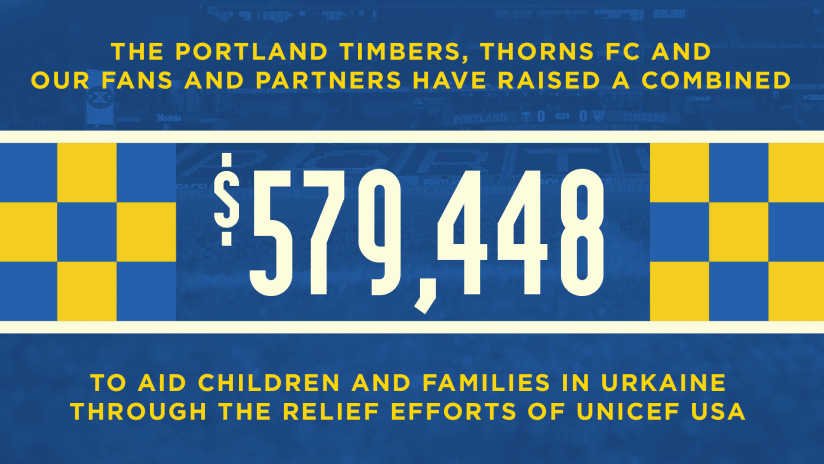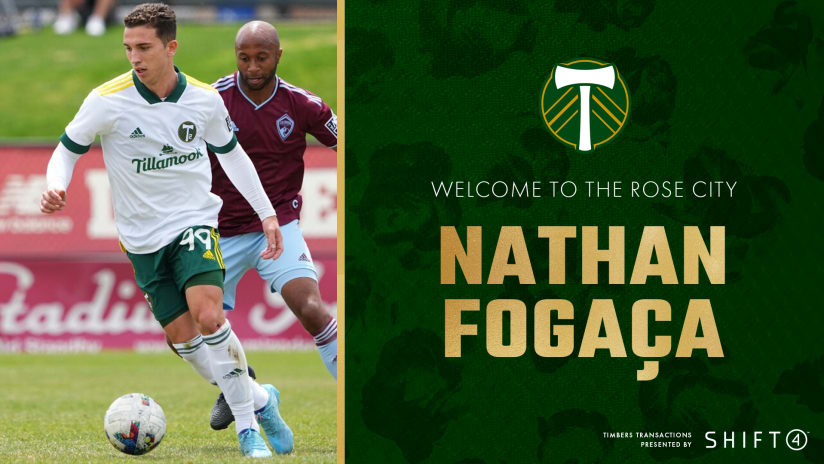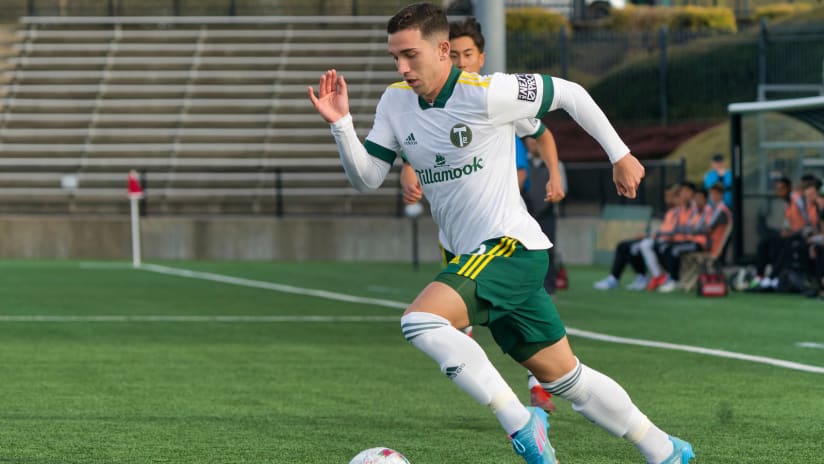Seventy-eight minutes into the Portland Timbers’ 3-2 win against Vancouver on Apr. 9, Yimmi Chara received a pass from Sebastián Blanco in the box, muscled off a defender and used his right foot to blast a shot past Whitecaps’ keeper Thomas Hasal while falling down.
The goal gave Portland a much-needed 3-1 advantage, one it ultimately needed to stave off its Cascadia rival. Even more notable: it was the last goal that the Timbers scored.
Portland has now gone three games, roughly 300 minutes of action, since Y. Chara helped the team secure three points north of the border. While it has been easier to single out the Timbers’ offensive struggles over the past month, they haven’t exactly been scoring in droves early this season.
With 10 goals in 10 games, two of which came from the penalty spot, Portland is still trying to find its offensive rhythm. There have been flashes at times, but out of the team’s 84 shots this season, only 36 have been on target; it has scored more than one goal in a game just twice this season.
“It’s our job at the end of the day; we have to work a lot more and a lot harder,” Y. Chara said after Portland’s 2-0 loss against Colorado on Apr. 30. “We can’t lose our spirit. We know we have a long season to continue to work and the team will work to build on the confidence that we have.”
Needless to say, the offense needs some sort of spark, something coach Giovanni Savarese and his team doesn't hide from. Where do those goals come from and what will it take for the Timbers to end their multi-game drought?
Over the last few weeks, both Savarese and several players have discussed the team’s scoring struggles, trying to find a solution to what has become a difficult question. From finding more goals up top to toeing the line between patience and risk, these were a few things brought up.
Waiting on forward depth
When the Timbers made a run to the MLS Cup final last year, two of their biggest goal contributors down the stretch played up top. Felipe Mora scored 11 goals in 29 games while Jarosław Niezgoda contributed three in the 251 minutes he played after returning from an ACL injury.
In 2022, with Mora recovering from knee surgery, injuries having slowed rookies Tega Ikoba and Diego Gutierrez while Dairon Asprilla has mostly been deployed on the wing, that center forward depth has become just Niezgoda.
Through 10 games, Niezgoda has scored twice on 12 total shots from the striker position.
“There has been something we have lacked in the box that could have given us the possibility to just be better,” Savarese said after the Timbers’ 0-0 draw against RSL on Apr. 23. “It’s not that we haven’t had opportunities because in Houston, for example, [Niezgoda]’s opportunity, was face-to-face with the goalkeeper. We created [chances]. We just have to find the goal and put it inside the net.”
Outside of Niezgoda, Savarese has tried Y. Chara, a winger, at false nine this season. The Timbers’ top goal scorer, he’s at his best when playing with the freedom granted to him on either wing. While he began the season in great goal-scoring form, a bicycle kick and overhead goal aren’t exactly the most reliable methods of offense.
Portland’s lack of depth up top is one that can first be improved with health. Mora’s return alone should bolster the team’s attack while the addition of Nathan Fogaça, who scored 13 goals while with USL side San Antonio FC, gives Savarese another option. Ikoba has recently returned from injury as well, and recently scored the game-winning goal in the penalty-kick shootout against the Real Monarchs.
Neither Mora’s return nor the addition of Fogaça solves every issue, but having more potential goal scorers available to Savarese on a game-by-game basis would certainly help in the short term.
Improving confidence
In soccer, the relationship between confidence and scoring goals is often cyclical. Seeing the ball hit the back of the net improves confidence, which allows for more creativity and hence, more potential goals.
However, that cycle works in reverse, too. Not scoring a goal can feel like a heavy weight and put additional pressure on every pass and movement inside the final third. Now, after three scoreless games, the Timbers will have to find their way out of that rut.
“It’s a moment that's difficult because it starts to get in your mind a little bit,” Savarese said. “As a striker, I know that very, very well. You have to have the mentality and be strong to make sure you get over those hard [games] that sometimes you will have.”
Without confidence, chances going wide and saves feel like back-breaking blows. Going up a man and not having anything to show for it, like the Timbers did against both Houston and Colorado, can also hurt a team’s confidence.
However, the great thing about confidence and momentum is that it swings as quickly as a pendulum. Oftentimes it only takes one goal to open the floodgates, something Portland hopes happens as soon as this weekend’s game against New York.
Finding balance in patience
While a tough run of games, it’s not as if the Timbers haven’t had chances to score over the last month.
In its three scoreless games, Portland generated 2.7 expected goals. While far from an ideal total given that it came over the course of 270 minutes, the number indicates that the Timbers have been unlucky to not put at least one goal away.
“I think [we need] a little bit more maturity to be able to find the goal because we’re creating opportunities,” Savarese said after the Colorado game. “It’s more about finalizing. It’s more about there’s not only one making movements. Multiple players recognizing those moments as well and sometimes it's just not urgent enough for us to create more dangerous moments.”
Savarese cited the need for patience several times, but also brought up the importance of knowing when to exploit gaps in a defense with risky, line-breaking passes – a difficult balance to strike.
“I feel that sometimes our patience to move the ball might be negative,” Savarese said after the RSL game. “We do so well moving the ball. We look to control and look to make sure that we can find the open space to be able to penetrate; sometimes we try to be too perfect.”
Some potential solutions Savarese mentioned were to create space by playing balls deeper behind defenses and finding moments to play dangerous balls into the box, allowing forwards more of a presence in the final third.
When Portland wants to build out of possession, patience is vital. However, so is knowing when to take risks out of that possession. It’s a difficult balance for any team to strike, but one that the Timbers are hoping to achieve with the hope that it provides a further offensive spark.
The importance of returning pieces
Much like the team’s striker situation, the hope is that goals will eventually come with the improved health of key cogs in Portland’s offense.
The return of Eryk Williamson, one of the Timbers’ most creative players with the ball at his feet, helps the offense simply by allowing attackers to not drop as deep into midfield to receive the ball.
Blanco, too, is slowly making his return to 90 minutes fitness and has two assists through nine games. Just as important as the assists, though, is his gravity in attacking midfield, which draws defenders away from other attackers.
The goals will eventually come, Portland has too much attacking talent on paper for them not to, but there has been an increased sense of urgency after three-consecutive scoreless games.
While it doesn’t get any easier with the Timbers on the road to face the New York Red Bulls on May 7 (4pm PT, FOX 12 PLUS), all it takes is one goal to raise a team's confidence and get things back on track; the Timbers will be aiming for one in Harrison, New Jersey.
















